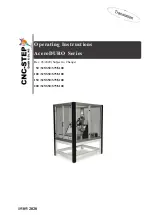
reparent
To reparent non-root-cause messages to the next highest active rootcause in a hierarchical correlation when
their immediate parent clears, use the
reparent
command in stateful correlation rule configuration mode. To
disable the reparent flag, use the
no
form of this command.
reparent
no reparent
Syntax Description
This command has no keywords or arguments.
Command Default
A non-root-cause alarm is sent to syslog after a root-cause parent clears.
Command Modes
Stateful correlation rule configuration
Command History
Modification
Release
This command was introduced.
Release 3.6.0
Usage Guidelines
Use the
reparent
command to specify what happens to non-root-cause alarms in a hierarchical correlation
after their root-cause alarm clears. The following scenario illustrates why you may want to set the reparent
flag.
Rule 1 with rootcause A and non-rootcause B
Rule 2 with rootcause B and non-rootcause C
(Alarm B is a non-rootcause for Rule 1 and a rootcause for Rule 2. For the purpose of this example, all the
messages are bistate alarms.)
If both Rule 1 and Rule 2 each trigger a successful correlation, then a hierarchy is constructed that links these
two correlations. When alarm B clears, alarm C would normally be sent to syslog, but the operator may choose
to continue suppression of alarm C (hold it in the correlation buffer); because the rootcause that is higher in
the hierarchy (alarm A) is still active.
The reparent flag allows you to specify non-root-cause behavior
—
if the flag is set, then alarm C becomes a
child of rootcause alarm A; otherwise, alarm C is sent to syslog.
Stateful behavior, such as reparenting, is supported only for bistate alarms. Bistate alarms are associated
with system hardware, such as a change of interface state from active to inactive.
Note
Cisco IOS XR System Monitoring Command Reference for the Cisco XR 12000 Series Router, Release 4.1
OL-24735-01
43
Alarm Management and Logging Correlation Commands
reparent
















































